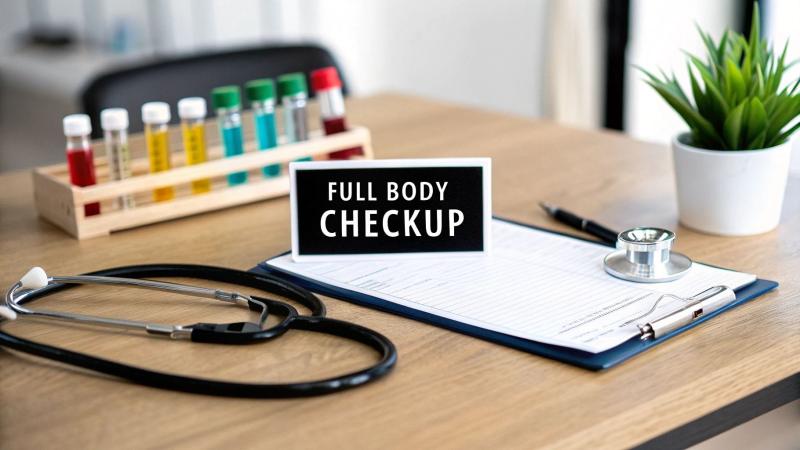Press release
Surgical Positioning 101: A Guide for New OR Staff and Residents
For new operating room (OR) staff and surgical residents, mastering surgical positioning (https://www.schuremed.com/aristos/) is a crucial but often underestimated component of patient care. Proper positioning impacts not only surgical access and success but also patient safety, comfort, and postoperative recovery. This guide aims to demystify the fundamentals of surgical positioning, highlight key considerations, and offer practical tips to build confidence in the OR.• Why Surgical Positioning Matters
Surgical positioning is not just about laying the patient on the table-it's a precise, strategic alignment tailored to the type of surgery being performed. The right position optimizes the surgeon's access to the operative site, reduces the risk of intraoperative complications, and minimizes postoperative issues such as nerve injuries or pressure ulcers.
Incorrect or careless positioning can result in:
Peripheral nerve damage (e.g., ulnar nerve palsy, brachial plexus injury)
Compromised ventilation or circulation
Muscle or joint strain
Pressure sores and skin breakdown
• Pre-Positioning Checklist
Before beginning any surgical procedure, every member of the OR team-surgeons, anesthesiologists, circulating nurses, and surgical technologists-must collaborate on patient positioning. Use this checklist to ensure a safe setup:
1. Review the Procedure Requirements: Know what position the surgery requires-this influences padding, support, and table accessories.
2. Assess the Patient: Consider age, BMI, comorbidities (especially diabetes, neuropathies, and vascular conditions), and any mobility restrictions.
3. Confirm Anesthesia Plan: General vs. regional anesthesia can affect the patient's ability to tolerate certain positions.
4. Protect Pressure Points: Use gel pads, foam cushions, or specialty devices to protect elbows, heels, sacrum, and other bony prominences.
5. Secure the Patient: Straps or supports must hold the patient safely in place without impeding circulation or causing discomfort.
6. Document Positioning: It's part of your medical-legal responsibility.
• Common Surgical Positions and Their Applications
1. Supine Position
Description: Patient lies flat on their back with arms at the sides or extended on armboards.
Common Procedures: Abdominal surgeries, hernia repairs, cardiac procedures.
Key Considerations:
Ensure head and spine alignment.
Pad heels, elbows, and occiput.
Watch for shoulder hyperextension if arms are abducted.
2. Prone Position
Description: Patient lies on their stomach, often with head turned to the side or supported in a headrest.
Common Procedures: Spine surgeries, rectal operations, and some posterior leg or shoulder procedures.
Key Considerations:
Intubation must be completed before turning the patient.
Protect eyes and avoid facial pressure.
Support chest and pelvis to allow free abdominal movement.
3. Lateral Position
Description: Patient lies on one side, with the operative side facing up.
Common Procedures: Thoracotomies, hip replacements, kidney surgeries.
Key Considerations:
Use axillary roll under the lower arm to prevent brachial plexus injury.
Double-check padding under knees and ankles.
Stabilize with beanbags or foam positioners.
4. Lithotomy Position
Description: Supine with legs elevated and supported in stirrups.
Common Procedures: Gynecological, urological, and colorectal surgeries.
Key Considerations:
Check stirrup placement to prevent peroneal nerve damage.
Simultaneously elevate/lower both legs to avoid hip dislocation.
Watch for compartment syndrome during long cases.
5. Trendelenburg and Reverse Trendelenburg
Trendelenburg: Head down, feet elevated.
Reverse Trendelenburg: Head elevated, feet down.
Common Procedures:
Trendelenburg: Lower abdominal and pelvic surgeries.
Reverse Trendelenburg: Upper abdominal, head, and neck procedures.
Key Considerations:
Be mindful of respiratory limitations due to diaphragm pressure.
Watch for sliding; secure patient with shoulder braces or anti-slip mats.
Monitor blood pressure shifts.
• Special Considerations for Safe Surgical Positioning
Pressure Ulcer Prevention
Prolonged procedures increase the risk of pressure injuries. Use pressure-distributing surfaces, reposition when feasible, and always check high-risk areas.
Nerve Injury Avoidance
Common nerve injuries include:
Ulnar nerve: from compression at the elbow
Brachial plexus: from excessive arm abduction or head rotation
Peroneal nerve: from stirrup compression at the fibular head
Ensure padding and limb alignment are appropriate and periodically checked.
Respiratory and Hemodynamic Support
Positioning can directly affect ventilation and venous return. Close coordination with anesthesia is essential, especially in compromised or obese patients.
Equipment Familiarity
OR tables, positioning devices, and specialized supports differ between institutions. New staff should request hands-on orientation and practice setup for common positions.
• Communication and Teamwork
Effective surgical positioning is a team effort. The "time-out" phase before incision is the last opportunity to review and confirm the patient's positioning and padding. Encourage open dialogue between team members if there are concerns.
Here's a simple mnemonic to remember during pre-op setup: P.A.S.S.
P: Position verified and appropriate
A: Anesthesia-aware and assisted
S: Secure and supported
S: Skin and nerves protected
• Documentation: What to Record
Accurate documentation supports quality care and protects against legal liability.
Note:
Final position and any deviations from standard
Devices or supports used
Pre-existing conditions that influenced positioning
Skin checks before and after
Time of repositioning if needed during surgery
• Training Tips for New OR Staff
Observe and Ask Questions: Learn from experienced team members. Take time to understand the rationale behind every setup.
Hands-On Practice: Participate in simulation training or dry-run setups with OR equipment.
Use Visual Aids: Anatomy posters, positioning charts, and digital references can reinforce memory.
Stay Updated: Guidelines evolve-especially regarding safety standards and new positioning devices.
• Final Thoughts
Surgical positioning is both an art and a science. While often overshadowed by technical surgical tasks, it is a foundational skill that can dramatically influence patient outcomes. For new OR staff and residents, investing time in learning positioning principles builds clinical confidence, fosters patient trust, and upholds the highest standards of operative care.
In every case, remember that behind every positioning protocol is a patient relying on you for comfort, dignity, and safety. Get the position right, and you set the stage for surgical success.
Office 7602 182-184 High Street North East Ham London E6 2JA
Finixio Digital is a UK-based remote-first Marketing & SEO Agency helping clients worldwide. In only a few short years, we have grown to become a leading Marketing, SEO, and Content agency.
Contact:
Mail: Media.finixiodigital@gmail.com
Phone: +44 7577 509325
https://sportsurger.org/
This release was published on openPR.
Permanent link to this press release:
Copy
Please set a link in the press area of your homepage to this press release on openPR. openPR disclaims liability for any content contained in this release.
You can edit or delete your press release Surgical Positioning 101: A Guide for New OR Staff and Residents here
News-ID: 4127208 • Views: …
More Releases from Finixio Digital

Here's the Best Non-Surgical Fat Reduction Options
Let's face it, most of us have struggled with stubborn fat that just doesn't seem to budge, no matter how much we exercise or eat right. While surgical options like liposuction can be effective, not everyone wants to go under the knife. Fortunately, there are now non-surgical fat reduction treatments that provide impressive results without the risks, downtime, or recovery associated with surgery.
In this article, we'll explore the best non-surgical…

Unwrap Incredible Savings on Clearwave Fiber: The Best 100% Fiber Internet Deals …
As we approach 2025, Clearwave Fiber Internet is set to offer incredible savings on their 100% Fiber Internet services. These new Fiber Internet deals promise unmatched speed and reliability, making them the best choice for consumers looking to upgrade their internet experience. Many believe this company stands out as the best Internet provider, particularly for those craving high-speed Internet at competitive prices. Discover how these offerings can transform your connectivity…

Full Body Checkup Your Gateway to Proactive Health
A full body checkup is one of the most thorough and proactive approaches to taking control of your long-term health. By regularly evaluating all major bodily systems and risk factors, a full body checkup helps to identify potential problems before symptoms develop, granting you the opportunity to stay healthy and empowered. At Liv Hospital (https://int.livhospital.com/), patients benefit from advanced diagnostics, experienced specialists, and patient-centered comfort throughout the process, making routine…

Why Marketers and Creators Are Switching to AIVector for Better Output
In the fast-paced world of digital marketing and content creation, high-quality visuals matter more than ever. Whether it's a brand logo, product illustration, social media graphic, or website icon, the quality of your visuals directly influences your audience's perception of your brand. This rising demand for crisp, scalable visuals has pushed marketers and creators toward tools that deliver precision and flexibility. One tool quickly becoming a favorite is AIVector (https://aivector.ai?utm_source=fiverr_violet&utm_medium=referral&utm_campaign=2025-11-26_9),…
More Releases for Position
Evolving Market Trends In The Automotive Position Sensor Industry: Innovative Ha …
The Automotive Position Sensor Market Report by The Business Research Company delivers a detailed market assessment, covering size projections from 2025 to 2034. This report explores crucial market trends, major drivers and market segmentation by [key segment categories].
What Is the Expected Automotive Position Sensor Market Size During the Forecast Period?
The automotive position sensor market has grown strongly in recent years. It will grow from $5.68 billion in 2024 to $6.09…
Prominent Automotive Position Sensor Market Trend for 2025: Innovative Hall Tech …
What combination of drivers is leading to accelerated growth in the automotive position sensor market?
The automotive position sensor market's expansion is predicted to be fueled by increasing demand for electric vehicles. Powered by electric motors, electric vehicles utilize rechargeable batteries or other energy storage devices for operation. Rising environmental awareness, technological advancements, governmental incentives, and expanding availability of charging infrastructure are all factors contributing to the growing demand for these…
Magnetic Position Sensor ICs Market
Magnetic position sensor ICs are tiny integrated circuits that detect the location of a magnet. They use the magnetic field to determine the magnet's position, either linear or rotary, without physically touching it. Magnetic position sensor ICs represent a transformative technology that is revolutionizing position sensing across various industries. As companies embrace automation, electrification, and innovation, magnetic position sensor ICs are poised to play an increasingly pivotal role in…
Reliance Medical Strengthens Its Retail Position
Reliance Medical, the UK's leading B2B first aid and medical device manufacturer, has acquired all trading assets of CMS Medical; formerly of Featherstone, UK.
Acquisitions are not new to Reliance Medical, having successfully integrated other significant UK first aid brands; Frank Sammeroff and Lewis's Medical Supplies. CMS will be no exception to this well-trodden path to successful integrations.
Reliance Medical has built its international reputation over the past 14 years through…
Precision without Position Sensor
Phase shifters are used in laser measurement to align optical path lengths. These move optics in the range of a wavelength, which corresponds to an adjustment range of less than one micrometer. It is crucial for the alignment to take place quickly and in a stable manner.
For the new S-303.BL phase shifter, PI (Physik Instrumente) replaces classic piezo ceramic PZT actuators (made of lead titanate - lead zirconate) with pico…
Messer consolidates market position in Austria
On 2 May 2011, Messer Austria acquired the gas business of Sapio Gase GmbH.
Messer Austria, the Austrian subsidiary of Messer, the largest privately run specialist for industrial gases, intends to consolidate its market position in Upper Austria through its purchase of the gas business of Sapio Gase GmbH. The transaction was completed on 2 May 2011. Sapio Gase, a subsidiary of SAPIO, an Italian company, has a strong presence in…
